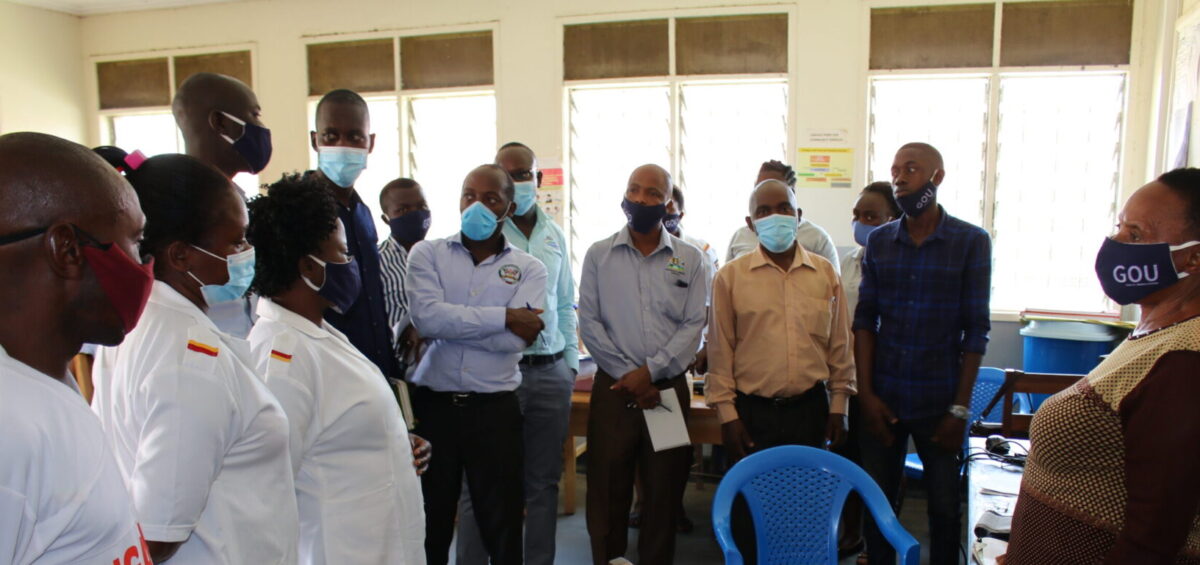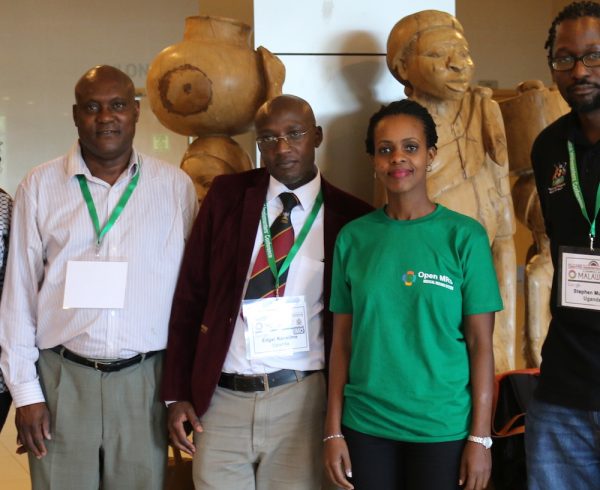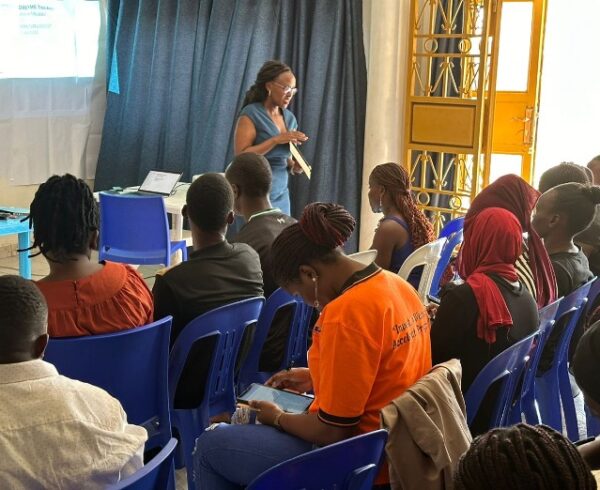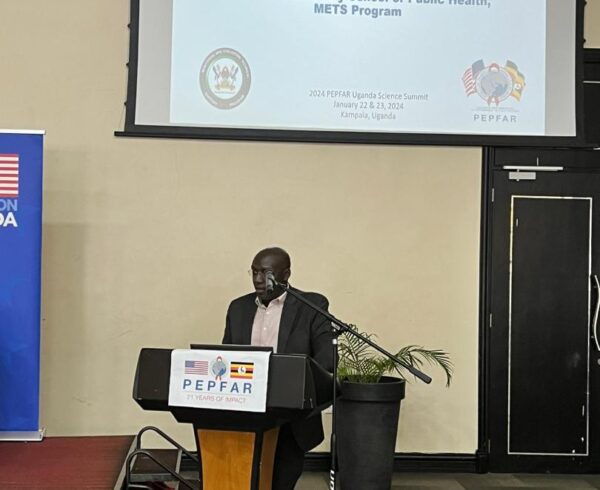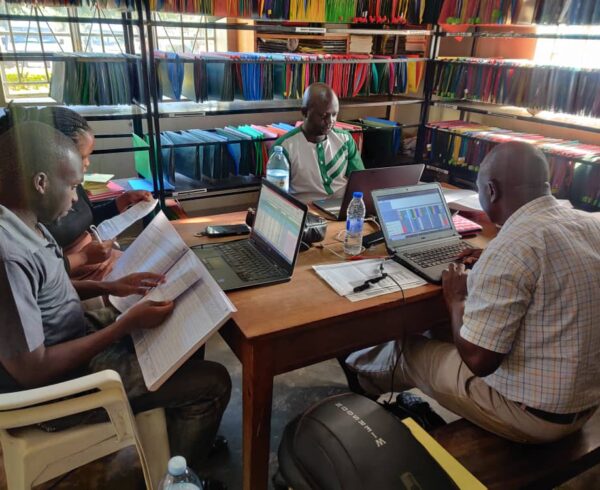The Ministry of Health in collaboration with the Monitoring and Evaluation Support Program (METS) has been scaling out UgandaEMR which is currently functional in over 1,000 health facilities within the sector. UgandaEMR is an Electronic Medical Record that stores patient medical files and used in (ART) clinics as an alternative to clinical hard files with patient information.
METS as an above site mechanism has a mandate to support partners in implementing UgandaEMR. Baylor Uganda is one of the partners that is implementing UgandaEMR in majority of its health facilities. However, these facilities are operating both UgandEMR and the paper data collection tool. Baylor Uganda has identified the need to upgrade its UgandaEMR retrospective approach to a point of care implementation that enables health workers capture clinical documentation while providing healthcare to patients.
It is upon that background that Baylor Uganda organized a one-week activation of UgandaEMR Point of Care (PoC) implementation in the Rwenzori region. This activity took place on 8th – 12th March 2021 targeting District Health Officers (DHOs), Data Officers, Hospital leadership, District Leadership.
Feedback from different beneficiaries of the new system

DHO Bunyangabu appreciated the new system and have taken on two approaches in regard to infrastructure; Kibito Health Centre uses cables while Yerya Health Centre uses a wireless system
Dr. Stephen Oloya, the CAO Bunyangabu District said that he had heard of these transition efforts on various platforms he had visited in his 8month tenure and that was a good sign because it meant that it was working. He looked forward to the connectivity that was being worked on, not just within the facilities but hopefully across facilities at all levels and regions, “…. that would be an achievement!” he said.

He further added that he knew that these systems would help streamline reforms. It’s a challenge to the health workers who have to adopt a new system but they also have all the support they need. “I hope you get the feedback that you seek to upscale this systems and hope there is more training to help the health workers embrace the shift in technology.”
The DHO Bubdibugyo, Dr. Christopher Kiyiita noted that this system would elevate the district and that 60 Health staff attended an ICT basics training therefore he expected a smooth transition. He added that the district had 10 Electronic Medical Record (EMR) sites with 2 POC sites but planned to scale up to 5 by end of 2021.
Francis Ndahura Senior Administrator Bubdibugyo Hospital said his facility had embarked on this kind of innovation but hit a snug because of power cuts and network challenges so they were happy when they got onto the UgandaEMR which seemed more efficient. he was happy that his staff had quickly learnt how to use computers in a short period of time (one month) that the POC has been running.
Alfred Bagenda Head of ICT at Ministry of Health during an interaction at Bunyangabu CAO office noted that, “The target is to have hospitals paperless and the POC will help us archive this because it is passing the test and then it could be rolled to other facilities. This is aimed at better service provision. METS supports the system in many other ART clinics in various Health Facilities and now we can leverage on what’s working and in existence rolled to other facilities in other districts. We also like to see what Implementing Partners are doing and how best to leverage from it, learn from it as improve service to clients while providing best options for the users hoping to have them embrace the new systems.”
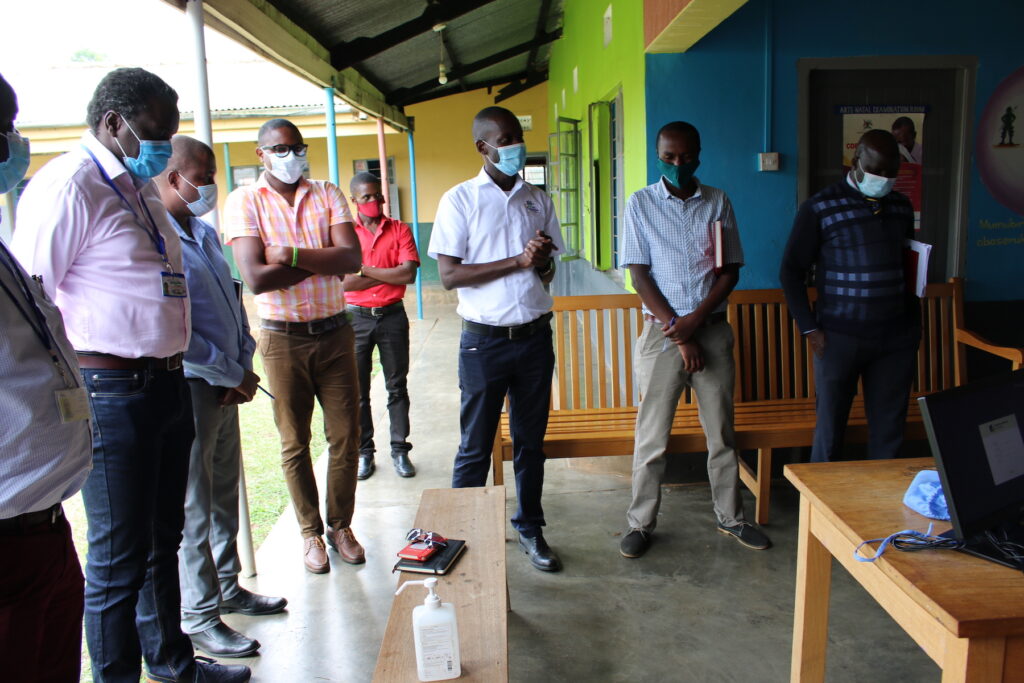
He added that Kibito and Yerya Health Facilities were new sites and were launching hence the belief that the country was closer to the Ministry of Health target more than ever.
Edward Bichetero, the Health Informatic Systems Program Coordinator at METS that it was an honour that the Rwenzori region had embraced these systems given the time that had been invested during the trial period at Kibito Health Centre which was at Centre stage of these implementations.
Challenges
- Rosette Mwebaze ART in charge Virika Hospital expressed an issue of not knowing how to split the drugs dispensed and was given an option on how to manage the entry in order to get a proper record
- There’s need to distinguish between pregnant moms and those on Family Planning
- They were advised to fill card with detail and fill the last encounter to show the status of the mother on the ART card
- Staff know how to input but need to learn how to analyze it for planning purposes
- Power cuts and surges as well as network interruptions were causing disruptions in extensive use of the system.
- Retrieving of data from previous day after they have done triage and clinician
- The use of both paper and paperless system creates work load because we are mitigating risk
- Another challenge from the clinicians point of view is the issue of referring more than one client to the next stage at a go
- Also to lab requires the user to know which lab technician is in the lab at that given time and requires the users to specify
- System accepted only one service so entry of clients with more than one service created a problem especially when issuing return dates hence making it tedious to use. It was agreed to create an extra section to input another reason for return of a client.
- In-Charge ART clinic – Dr. Edwin Mutabazi Ahimbisibwe at Kyenjojo Hospital (checked shirt) pointed out that the EMR training was too technical and staff needed a basic curriculum to guide training of system users at the different points of care.
Way forward
Samuel Lubwama a Software Developer with METS highlighted that METS was aiming at enabling a smooth transition to paperless and would continue to address challenges users were interfacing while using the system. In the same spirit, some of the issues were handled and effected with immediate effect at the facilities visited. this included quick training sessions with users that were facing some challenges.
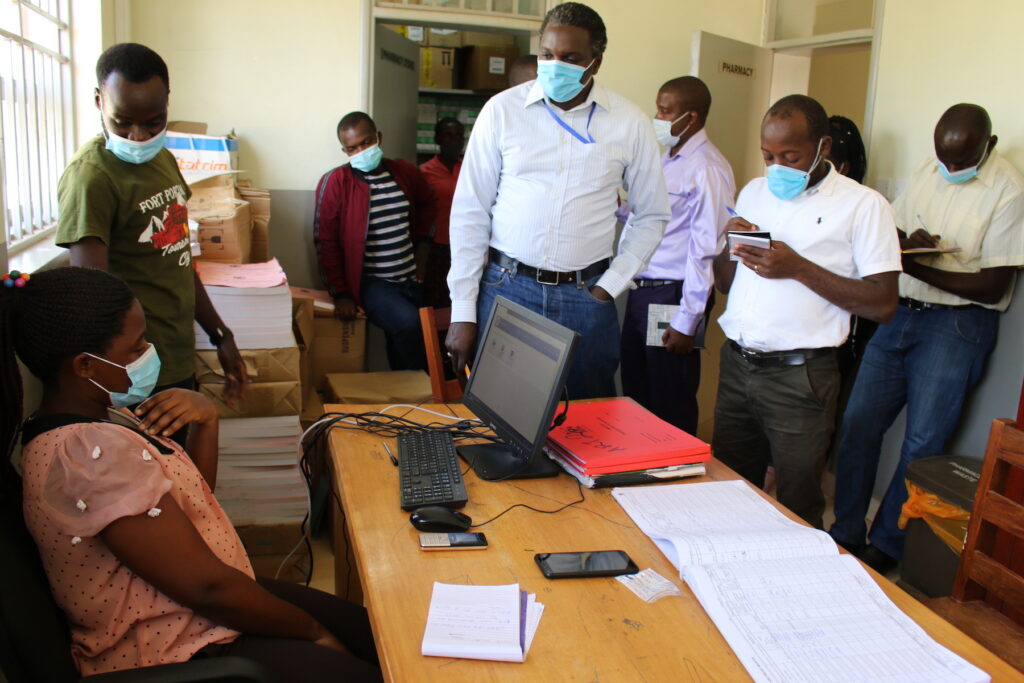
Alfred Bagenda from MoH was happy to inform the teams at difference facilities that the Ministry of Health was working on a criteria to work on the interstate of facilities to create a linked health care system and that phased transition was key to create confidence that the system would work. The fact that a comprehensive team had participated in the launch showed willingness of all parties involved and the few loop holes that had been raised would be managed sooner than later. He added that the Ministry would organize training sessions as well as create a platform for a feedback process “We hope to connect all facilities to NITA-U so that we can have one central data base as well as ensure connectivity in different sites.”

